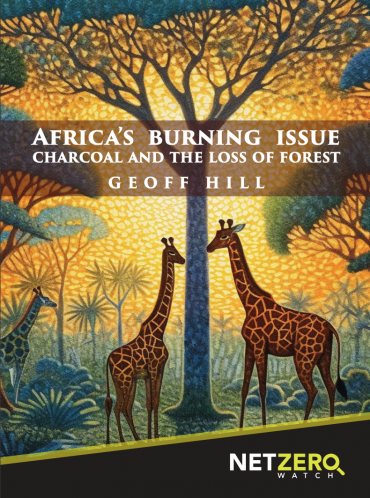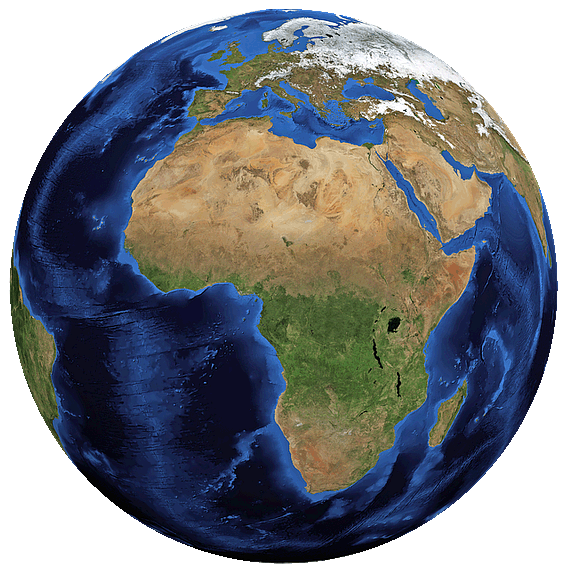By Jo Nova
Does anyone care? 600 million Africans don’t have electricity
They burn wood for power. Forests are razed and no one even notices. As Geoff Hill says, they warm their homes and cook their food the only way they can — by chopping down forests and converting wood to charcoal, a fuel used by the Greeks and Romans. If they had coal fired power or gas plants they wouldn’t need to cut down 400 year old trees.
An area the size of Switzerland is being denuded every year, 70% of Africa’s forests are gone, but it’s as if the rest of the world barely registers it.
Solar panels don’t work under thick cloud, and can blow away in cyclones, hydro plants won’t work in droughts, but fossil fuel plants survive bad weather. Do the Greens really care about the environment, or the poor — does the ABC, CBC or the BBC?
His advice: don’t let them get away with propaganda that keeps people in poverty
When you see a newspaper article claiming that sandstorms and creeping desert are solely down to climate change, write a letter to the editor – even just a few lines – explaining that a loss of vegetation is what allows the sand to blow and the desert to grow. This is not a denial of climate change, but a call for action. We must make sure Africans have the same access to electricity as in developed countries, then there will be no need for charcoal.
This is really a staggering issue of suffering and loss:
Exerpts from Geoff Hill’s paper, NetZeroWatch
 In Africa there’s a war against trees. … on a continent where millions have no electricity, the only fuel is wood, usually reduced to charcoal.
In Africa there’s a war against trees. … on a continent where millions have no electricity, the only fuel is wood, usually reduced to charcoal.
According to the World Bank, there are 25 countries that have less than half their people on the grid, and all bar one (Haiti) are in Africa.
Africa’s population has grown four-fold since 1960 and now stands close to 1.4 billion, and an estimated 80% of households rely on wood or charcoal. There are alternatives, including gas, kerosene and, where it’s available, electricity, but all come at a cost. Where trees are not replanted, the land degrades. Forest soil is loose and powdery, and blows in the wind; soon enough, there’s a desert where the jungle once stood.
Africa produces 60% of the world’s charcoal, around 25 million tons a year. Some is exported to Europe, but most is for local use. Yet it’s largely excluded from academic texts, and ignored by those who call for an end to oil, coal or gas.
Most civilizations had a Charcoal Age
Charcoal was a crucial fuel:
It’s the five-to-one rule that makes it work. Five tons of wood can be reduced to one ton of charcoal by burning off the moisture, gas and other elements, leaving a solid block of energy. This allows large amounts of fuel to be moved even where transport is a challenge. The seller can pack a dozen bags on a bicycle, and for buyers, a single bag (8–12 kg) can last a week.
Charcoal is among the most important materials in the story of civilization. It burns hotter than logs, with enough energy to liquify metal. Without it, the Pharaohs would not have had their jewellry and gold coffins, and the Greeks, Romans and Zulus would have fought with clubs instead of spears. It is used to filter drinking water and to keep your fishtank clean. Later came coking or mineral coal, the two often used together, and without them we’d have had no nails, barrels, warships or cannons, and no bronze or iron age. The industrial revolution and, later, the wires that made possible Edison’s capture of electricity and Alexander Graham Bell’s telephone, all relied on the ability to melt the various metals and blend them into alloys.’
Malawi, for example, has 21 million people, and 90% of them rely on wood and charcoal. When the government tries to ban charcoal, people smuggle it anyway.
A staggering 85% of the population is not on the grid, and Malawi has no oil or natural gas. Three quarters get by on $2 per day or less
The new hope is coal. Malawi has proven reserves of more than two million tons, with several mines in operation. A thermal power station is being built at Zalewa, a small town north of Blantyre, and the projected output of 300 MW will almost double the existing supply. Whether any of the cleaner technologies now available in South Africa will be used to limit emissions is not clear.
Tanzania to the north and Zimbabwe in the south have a growing dependence on coal, and the trend looks set to continue, even while Europe and the US seek to scale down their use of fossil fuels. In Malawi, all electricity is controlled by the state, and there have been several price hikes in recent years. Two solar plants produce just 80 MW, with another two on the drawing board, but there is a problem: Malawi has cloud cover an average of 38% of the year, peaking at close on seven days out of ten in January and February.
We can all see what’s coming. How will any tree survive?
Read it all at NetZeroWatch.
Image by Arek Socha from Pixabay

